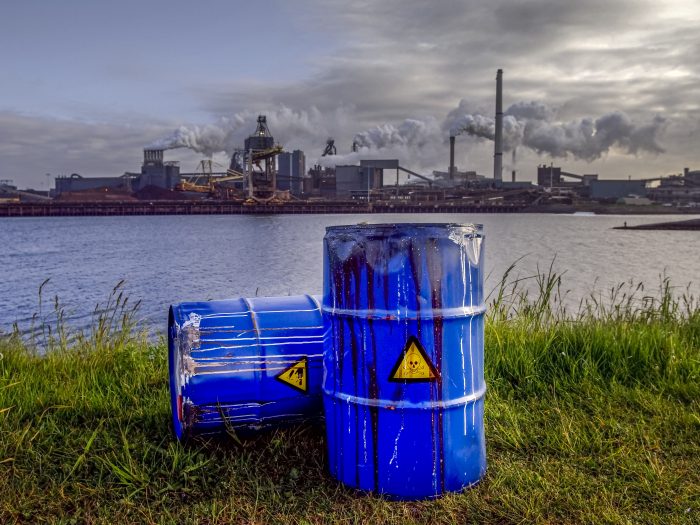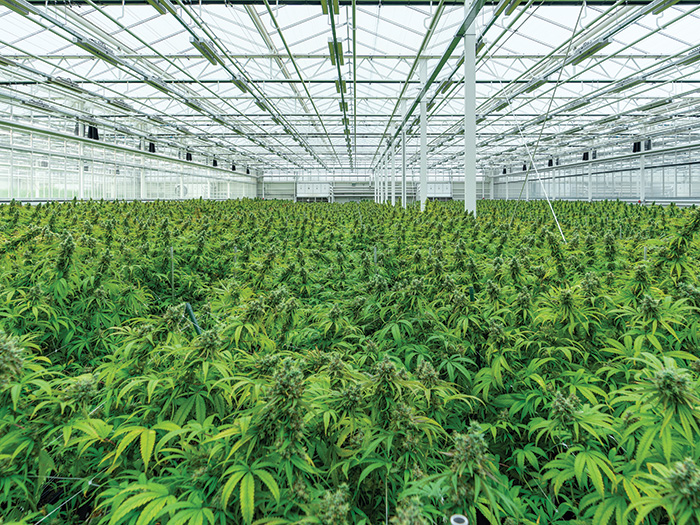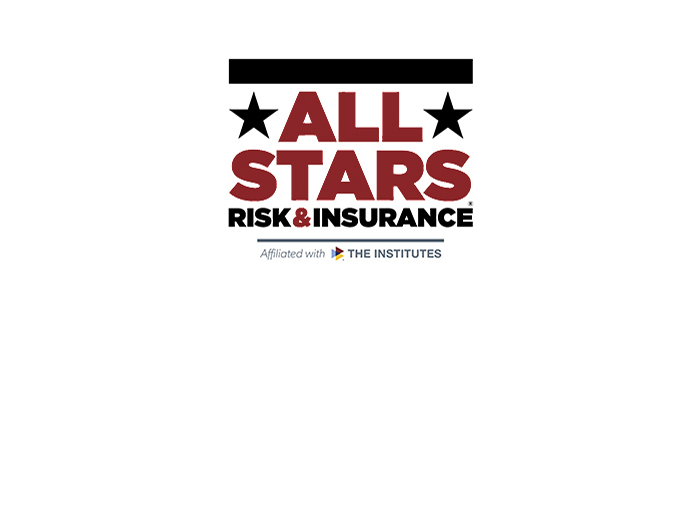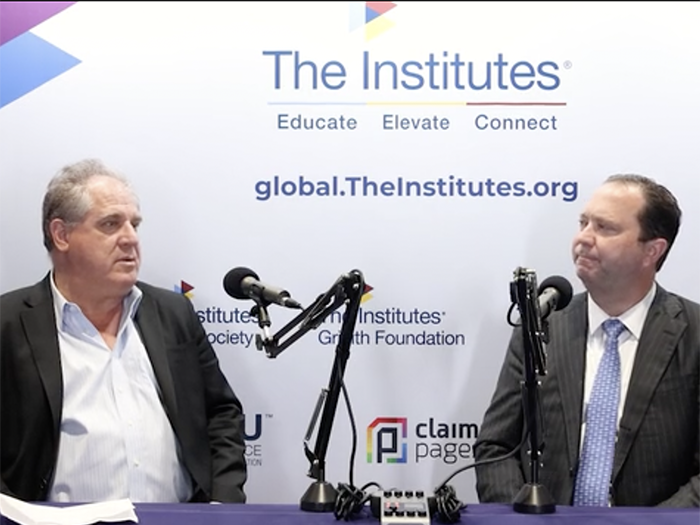Sponsored: Philadelphia Insurance Companies
As Frequency and Severity of Pollution Claims Rise, Environmental Insurance Is Finding the Tools to Move Forward

Environmental insurance has come a long way since its advent in the late 1980s, emerging largely in tandem with the formation of the United States Environmental Protection Agency (EPA) and the inception of environmental law.
“When environmental insurance began, regulations were limited, and enforcement focused on very specific industrial exposures. Such exposures were identified via permitting of operations and backed by requirements of financial assurance mechanisms through federal law under the Resource Conservation and Recovery Act (RCRA),” said Jamie Langes, Assistant Vice President in the Environmental Division with Philadelphia Insurance Companies.
“Over time, with an increased understanding of how industry processes and chemical use interacts with the environment, more insureds’ exposures have become monitored by regulatory provisions.”
This isn’t a bad thing, she said: “Environmental regulations are evolving over time to ensure enforcement of liability for pollution exposures to corporations,” Langes added.
At the same time, casualty markets were offering broad language provisions under general liability (GL) programs, which had provided some liability protections for pollution. However, profitability declined in the GL market due to the severity of some of those accepted pollution exposures.
To combat the reduction in profitability from pollution claims and due to the availability of dedicated environmental insurance programs, GL markets evolved to place firm exclusions for contamination within their forms, trying to preclude any kind of pollution risk transfer.
With casualty markets declining to accept a pollution risk transfer and regulations increasing a client’s exposures of liability for contamination, a broader base of insureds are seeking environmental insurance than ever before.
Environmental insurance has now become a highly competitive space with 30+ carriers offering some type of dedicated pollution liability coverage.
“A variety of competitive solutions have developed in the marketplace to offer clients positive risk transfer solutions in the dedicated environmental space,” said Langes.
To differentiate their offerings, coverage has expanded.
With increased access to coverage solutions from a variety of carriers, rates have been driven lower over time. Because environmental losses have historically been seen as having more severity potential, clients requested additional limit to accommodate those potential severity events.
As a result of these three factors, carriers increased their limit offerings, capacity, at economical rates while expanding their coverage affirmations to much broader risk transfer solutions.
“Overall, competition has led to more comprehensive programs for an insured’s potential exposures on a cost-effective basis,” said Langes.
Langes went on to say, however, that while beneficial to insureds, “environmental insurance is now exhibiting increases in severity and frequency of claims due to the evolution of the industry in conjunction with the regulatory environment. Pollution is no longer just an exposure to ‘hazardous’ materials, but rather a wide variety of non-hazardous and unregulated conditions such as mold, legionella and in some instances, even silt or sedimentation,” said Langes.
With limit values more comparable to excess marketplace offerings, the increase in severity and frequency to the environmental carriers are starting to result in a reduction or consolidation of limits available to clients.
Langes further commented that “similar to the excess market, brokers who are working on behalf of their clients have begun to seek limit capacity from multiple carriers in lieu of placing the full exposure with one environmental insurer; capacity is not just an excess market concern.”
Why Are Pollution Claims Rising in Frequency and Severity in the First Place?

Jamie Langes, Assistant Vice President in the Environmental Division with Philadelphia Insurance Companies
Langes identified four main causes for the rise in pollution claims:
1. Public Access to Information;
2. Aging Infrastructure;
3. Social Inflation; and
4. Increased Regulatory Fines and Penalties.
“Before, pollution was really seen as a severity issue triggered almost exclusively by the government saying, ‘Hey, you polluted, you’ve got to clean this up,’ ” said Langes.
“Now, severity triggers are more than the regulatory environment. It is a complaint from a concerned citizen group, or a release from the impacts of aging infrastructure. It is social inflation and high-value fines or penalty awards to discourage future pollution impacts from an insured’s operations.”
1) Public Access to Information
When it comes to accessing information, any concerned citizen with a smart phone or computer can learn more and act quickly to instigate regulatory involvement on potential pollution incidents.
The public, under the Freedom of Information Act, has a right to review companies’ environmental permits and pollution exceedance data. In this age of technology, records have been digitized to be uploaded directly to federal, state, or local governmental websites, which can be accessed by the general public.
Social media has also enabled the spread of potential pollution event information to the masses quickly and can even tarnish a business’ reputation long before it has the chance to correct any potential pollutant issues.
Social media has empowered the public and motivated regulatory agencies to fully enforce pollution protections while also providing an outlet for notification of a pollution incident to ensure safety of the local communities.
“Access to information has increased the likelihood of claimants coming forward with more frequency and precipitates clients who have purchased environmental coverage looking to access their insurance programs for legal expense and defense costs, public relations support, emergency remediation expenses, property damage and bodily injury claims,” said Langes.
A robust pollution program can potentially respond on a variety of aspects during and after the pollution claim event.
2) Aging infrastructure and limited client capital expenditures to update
The United States was built in the Industrial Age; but now, factories are filled with machinery, tanks, piping and more that are decades old.
“A lot of that infrastructure is updated over time, but largely just for the ancillary pieces,” said Langes.
Replacing the whole operation can get expensive for a facility with many buildings featuring equipment embedded into the floors and underground substructures such as vaults, trench drains or clarifiers not easily accessed or replicable.
Instead, a property owner updates equipment that can be visually inspected and easily accessed such as valves, heating coils or seals and elects to purchase insurance as a supplement to their regular maintenance schedule.
Reliance on environmental insurance has become a larger risk management tool for such integrated operational exposures at various properties across the country.
“Now that the environmental market is more affordable and features expanded coverage combined with the fact that industrial facilities are a lot older, (pollution) insurance makes sense to corporations to utilize to help manage severe risk,” Langes said. “But that also precipitates a rise in potential frequency as well as severity to the carriers who issue the pollution programs given the facility portfolios and vast footprints of many clients across the United States.”
3) Social inflation
Social inflation, a term used by insurers to describe rising costs of insurance claims resulting from things such as increased litigation, broader definitions of liability, more plaintiff friendly legal decisions and larger compensatory jury awards, is affecting environmental lines of coverage as well.
As more potential pollution cases are litigated, the environmental insurance sector is experiencing the effects of social inflation which could hold lasting impact.
“A precedent of large (nuclear) verdicts in civil action suits for pollution have increased the likelihood of future claimants achieving high value awards due to precedent.”
“Juries are also made up of everyday people,” Langes said. “And people often rule based upon sympathy or empathy when suggesting award values to plaintiffs.”
“We’re human. We appreciate what a person has gone through, and when a person hears tangible stories about what pollutants can do—various cancers, long-term effects on children or DNA—that person wants to award a very large sum because how do you, realistically, put a price tag on someone’s life?”
This desire for monetary retribution to the plaintiff from potential pollution effects resulting in bodily injury or property damage contributes to the severity of pollution claims. Working in tandem with an access to information, third parties are looking to hold companies “accountable” for long-term health effects to the general population from pollution releases, or for explosions that cause property damage.
4) Increased regulatory imposed fines, penalties and remediation
Chemicals can have long-term impacts to the environment and may take decades to remedy. Many emerging chemicals of concern (COCs), like per- or poly-fluorinated compounds (PFAS/PFOAs) have uncertainty surrounding appropriate remediation techniques to remove them from the environment. For these COCs, it is unknown how long or how costly a remediation will be.
Therefore, Langes explained, a timeline for meeting remediation objectives can be hard to create or define which places long-term uncertainty on the total costs associated with a pollution release to insurers who have facilitated a risk transfer via an environmental policy.
Adding to the problem is a low rate of tenure of remediators with oversight on the incident that will last through the entirety of a remediation cycle.
“Combine that with potential jurisdictional inconsistencies over time, as federal, state or even local regulators may interpret the environmental regulations differently, or that remediation objectives fluctuate as the cleanup progresses. As remediation efforts are constantly in flux, likewise, estimates for timelines (and associated costs) to achieve remediation closure are also in flux.”
Claims Severity’s Impact on Environmental Insurance Capacity
As the factors behind pollution claim frequency and severity come together, environmental carriers have to make a decision: Do they litigate and seek amicable settlement, enter a remediation objective in an effort to curb overall exposure to the limit, or do they simply pay out the limit of the policy?
“The carrier and the insured are business partners in a claim event,” Langes said.
“Often claims are reviewed from both a consideration of the individual merits of the claim or allegations against the best way to resolve the claim under the policy provisions. Pollution claims are varied and require technical knowledge and significant attention to environmental law.”
She gave an example of a gas plant explosion.
“Let’s say there’s a $500,000 self-insured retention on a pollution policy with a $25 million limit of liability. When the plant exploded, the facility could easily spend the policy retention on emergency response actions alone just to try to contain the release.”
“There could still be potential bodily injury claims and/or property damage from the surrounding buildings or residencies from toxic fumes released in the fire. The foam used to put out the fires could become a resulting runoff pollution issue as well.”
In this scenario, the client could not only be held liable for the remediation, bodily injury or property damage claims from third-party claimants, but also face regulatory fines and penalties.
“As the claim information comes into the adjustor, a carrier will decide whether or not the severity of the incident will result in a commitment to the client to just pay the available limit,” said Langes. “With all of these factors of consideration, primary environmental carriers are going to have to take a second look at how much limit they’re going to put out at any given time for any given risk transfer.”
In fact, over the last year, environmental markets have consolidated in mergers and acquisitions (which has naturally reduced availability for capacity), or begun a specific commitment to reduce their availability to issue limits in various risk classes.
Creating a Great Support System for Clients
The good news is that experts in the space are working hard to find a solution to help clients meet their environmental coverage needs while partnering with them in facilitating pollution liability risk transfers.
Carriers are also asking better questions: “Environmental is a very specialized field. At PHLY, most of our underwriters have an engineering background. We’re knowledgeable and skilled in this area. We’re looking to find the solutions to our clients’ requests.”
Regulations, she said, are always changing and not every risk is the same.
At PHLY, the environmental team is ready to offer its clients better risk management tools to handle their unique risks. These tools include providing practical outlets for clients to access to an emergency 24/7 spill hotline with qualified response contractors ready to respond quickly anywhere in the United States to a pollution event. Easier claims reporting enables clients to report potential claims or pollution incidents digitally through a variety of access points electronically. Along with access to media control for public relations to assist in retaining a client’s reputation using social and traditional media channels, environmental insurance is a partnership.
“Environmental insurance has become a very important tool in the risk toolbox,” said Langes. “We partner with our insured’s risk management process and procedures to facilitate appropriate and necessary support of risk.”
To learn more, visit: https://www.phly.com/ESdivision/es-environmental.aspx.
This article was produced by the R&I Brand Studio, a unit of the advertising department of Risk & Insurance, in collaboration with Philadelphia Insurance Companies. The editorial staff of Risk & Insurance had no role in its preparation.










